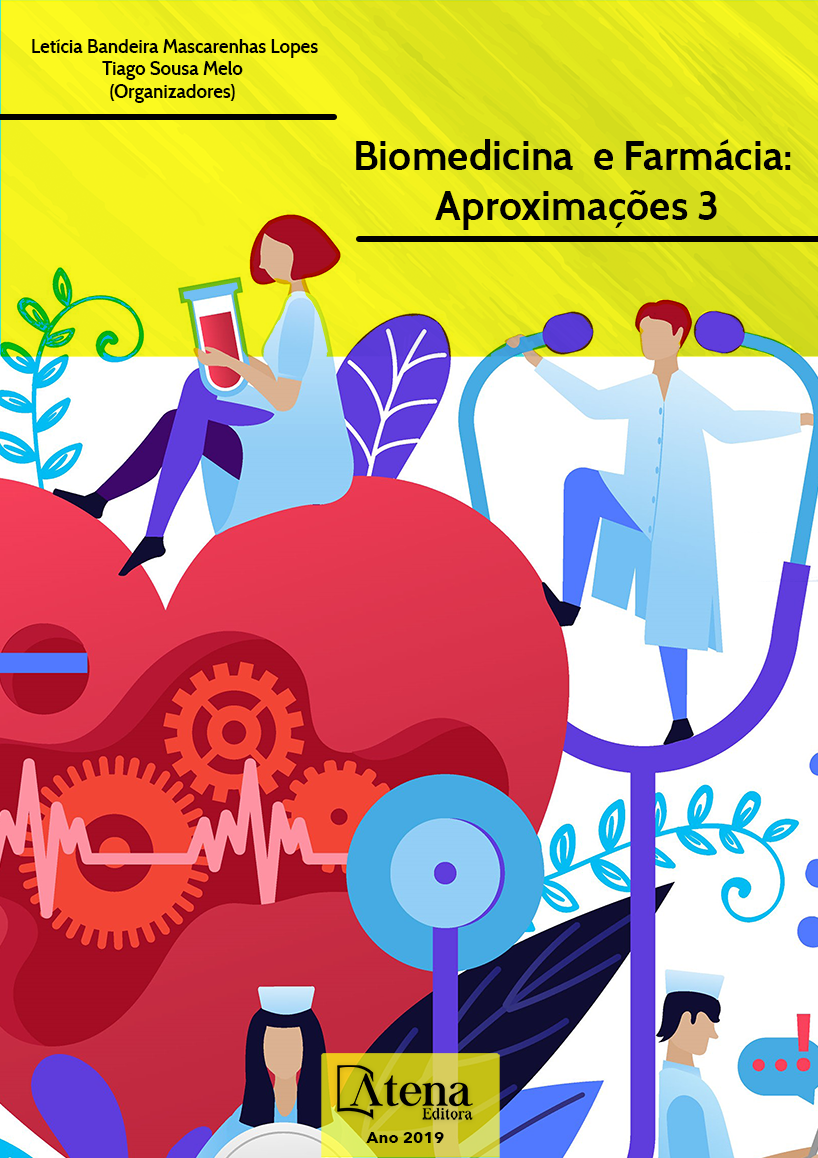
Incidência de Staphylococcus aureus meticilino resistente em um laboratório particular da região metropolitana de Belém/PA
O Staphylococcus aureus meticilino
resistente (MRSA) é um microrganismo de
alta importância clínica, logo o objetivo deste
estudo foi avaliar a incidência de MRSA em
amostras clínicas advindas de um laboratório
privado em Belém-PA. Neste estudo foram
analisados bancos de dados obtidos de um
Laboratório particular, coletados entre os
anos de 2010 a 2018 sendo estes tabulados e
analisados estatisticamente, as amostras foram
submetidas aos testes de coloração de Gram,
catalase, coagulase em seguida inseridas
no equipamento VITEK, testes manuais de
resistência induzida a clidamicina e teste de
Screening para cefoxicitina. Nos resultados
foram obtidos 1848 amostras positivas para o
gênero Staphylococcus, sendo 1096 (59,31%)
positivas para espécie Staphylococcus aureus,
317 (32%) cepas foram positivas para o teste
de Screening de cefoxitina caracterizando o
perfil MRSA, em seguida o teste de resistência
induzida a clidamicina (teste D) revelou ser
positivo para 278 (27,74%), das amostras e
negativo para 739 (72,66%),amostras. Por fim
para identificação dos tipos de MRSA foram
aplicados discos de trimetropim/sulfametoxazol
no meio, evidenciando 221 (69,72%) cepas
sensíveis, indicativo para CA-MRSA e 78
(24,61%) cepas resistentes, indicativo para HAMRSA.
Diante dos dados, observamos que os
sítios de infecção mais prevalentes são corrente
sanguínea, fragmento ósseo e partes moles,
é visível à prevalência de cepas CA-MRSA,
sugerindo que o paciente já está vindo infectado
da comunidade, logo é necessário um controle
na disseminação desta cepa para que a mesma
não se instale no âmbito hospitalar, eliminando
o risco de cepas CA-MRSA multirresistentes,
além do controle no uso de antimicrobianos.
Incidência de Staphylococcus aureus meticilino resistente em um laboratório particular da região metropolitana de Belém/PA
-
DOI: 10.22533/at.ed.2241914049
-
Palavras-chave: Resistência bacteriana, S. aureus resistente a meticilina, S. aureus intermediário a vancomicina, S. aureus resistente à vancomicina.
-
Keywords: Bacterial resistance, Methicillin-resistant S. aureus, S. aureus intermediate vancomycin, Vancomycin-resistant S. aureus.
-
Abstract:
Staphylococcus aureus-methicillin
resistant (MRSA) is a microorganism that has
high resistance and dissemination capacity,
based on its clinical importance, the objective
of this study was to evaluate the incidence of MRSA in clinical samples from a private
laboratory in Belém-PA. In this study we analyzed databases obtained from a private
laboratory, collected between the years of 2010 and 2018. These tabulations were
statistically analyzed and the samples were submitted to Gram staining, catalase and
coagulase tests, inserted in the VITEK equipment, besides manual tests of resistance
induced to clidamycin and Screening test for cefoxicitine. In the results, 1848 samples
were positive for the genus Staphylococcus, 1096 (59.31%) positive for Staphylococcus
aureus species, 317 (32%) strains were positive for the cefoxitin Screening test
characterizing the MRSA profile, then the test of resistance induced to clidamycin
(test D) was found to be positive for 278 (27.74%) of the samples and negative for
739 (72.66%) samples. Finally, for identification of MRSA types, trimethoprim /
sulfamethoxazole discs were applied in the medium, showing 221 (69.72%) sensitive
strains, indicative for CA-MRSA and 78 (24.61%) resistant strains indicative of HAMRSA.
Of the data presented, we observed that the most prevalent sites of infection are
bloodstream, bone fragment and soft tissues, is visible to the prevalence of CA-MRSA
strains, suggesting that the patient is already infected with the community, therefore a
control is necessary in the dissemination of this strain so that it does not settle in the
hospital setting, eliminating the risk of emerging multiresistant CA-MRSA strains, in
addition to controlling the use of antimicrobials.
-
Número de páginas: 14
- Elianne da Silva Vieira
- Carolina Beatriz Freitas Nunes
- Larissa de Souza Mendes
- Raimundo Gladson Correa Carvalho


